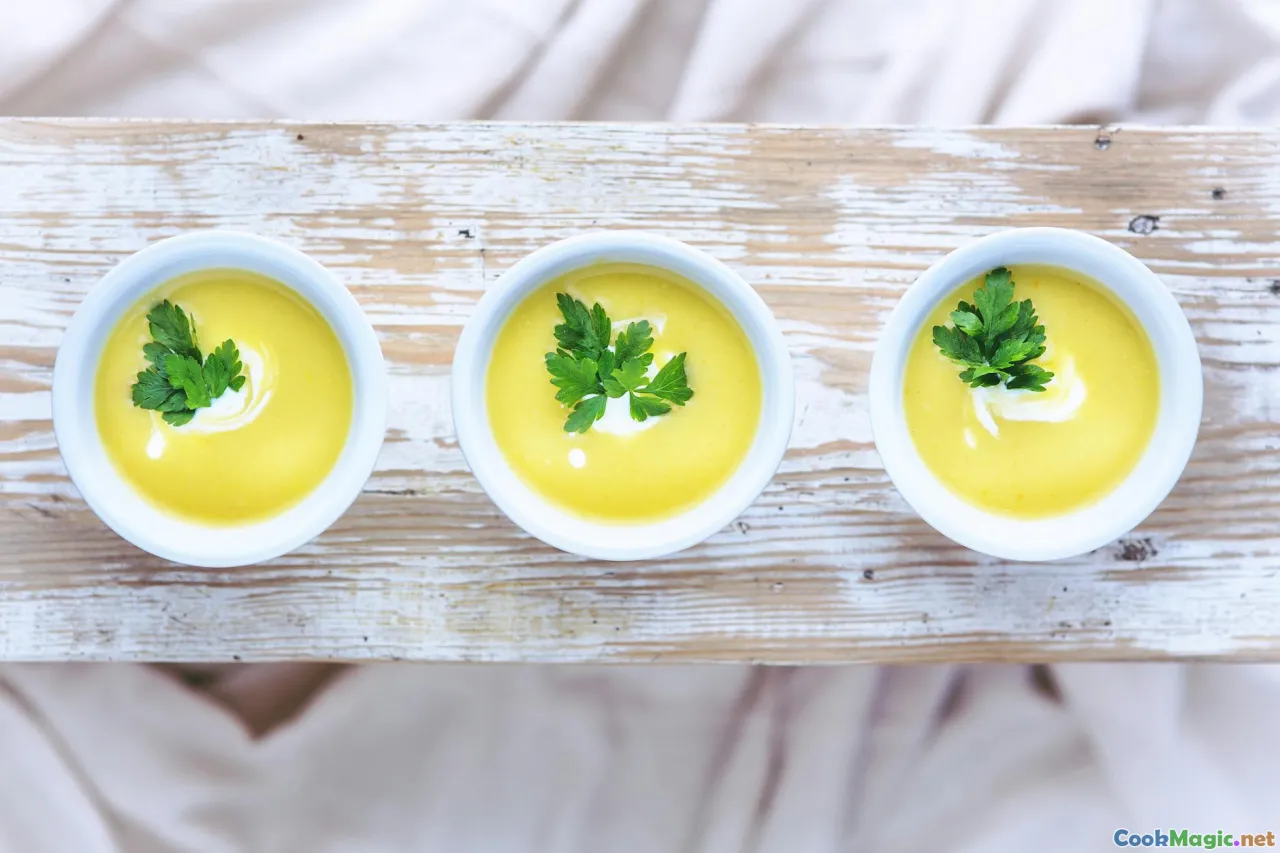The Science Behind Peru’s Foamy Potato Soups
8 min read Discover the fascinating science behind Peru’s iconic foamy potato soups, blending tradition with culinary innovation for a sensory journey. April 28, 2025 22:00
The Science Behind Peru’s Foamy Potato Soups
Peru, a land of vibrant cultures and breathtaking landscapes, has gifted the world a culinary treasure that is both comforting and scientifically intriguing: its foamy potato soups. These soups, with their inviting frothy tops and velvety textures, are more than just a feast for the senses—they are a testament to the intricate dance of chemistry and tradition that has evolved over centuries.
An Introduction to Peruvian Potato Soups: A Cultural Staple
Imagine walking through the bustling markets of Cusco or Arequipa, where the scent of boiling potatoes mingles with the aroma of spices and fresh herbs. Here, the humble potato—native to the Andean highlands—becomes a canvas for culinary artistry. Traditional Peruvian potato soups, such as papa a la huancaína or sopa de papa, are staple dishes that embody the country’s agricultural history and cultural resilience.
What sets these soups apart is their signature foam—a light, airy layer that crowns each bowl, inviting curious glances and eager spoonfuls. But beyond their visual appeal, there lies a fascinating science that explains how these frothy textures come to life.
The Origins of Foamy Textures in Cooking
Foams in culinary contexts are not new. From the frothy cappuccinos of Italy to the delicate espuma of modernist cuisine, the manipulation of air and liquids has long fascinated chefs and scientists alike. In traditional Peruvian cooking, the foam is often a byproduct of natural ingredients and specific techniques that have been refined over generations.
The Chemistry of Potato Starch and Foam Formation
1. The Role of Potato Starch
Potatoes are rich in starch—a complex carbohydrate that has unique properties when heated and agitated. When potatoes are boiled and mashed, they release starch molecules into the surrounding water, creating a viscous, glue-like consistency.
This starch acts as a natural emulsifier, stabilizing the formation of foam. When the soup is vigorously whipped or blended, air bubbles become trapped within the starch matrix, creating a stable foam that resists collapsing.
2. Surface Tension and Gas Entrapment
At the molecular level, the formation of foam relies on surface tension—the force that causes liquid surfaces to behave like elastic sheets. When air is introduced into the hot potato mixture, the surface tension prevents the air bubbles from popping immediately, allowing a foam to develop.
3. Temperature and Viscosity
The temperature of the soup influences its viscosity. A hot, viscous soup provides an ideal environment for trapping air bubbles, whereas cooling or dilution can cause the foam to collapse. Skilled cooks understand this balance, timing their whipping or blending to achieve the perfect froth.
Traditional Techniques That Foster Foam Formation
1. Whisking and Aeration
One common method involves vigorously whisking the hot soup directly in the pot. The mechanical action incorporates air into the liquid, and the starch content helps maintain the stability of the resulting foam.
2. Blending with a Handheld Mixer
Modern adaptations often use immersion blenders to achieve a finer, more consistent foam. This technique allows for controlled aeration, resulting in a silky, cloud-like top layer.
3. Addition of Natural Foaming Agents
In some recipes, ingredients like egg whites or certain herbs are added to enhance foam stability. While not traditional in all Peruvian recipes, these elements reflect the scientific understanding of foam chemistry.
The Emotional and Cultural Significance
Beyond the science, the foam in Peruvian potato soups carries symbolic weight. It represents warmth, hospitality, and the ingenuity of ancestral cooks who turned simple ingredients into culinary art. Sharing a bowl of steaming, foamy soup is an act of communal bonding, a ritual that transcends mere sustenance.
Personal Reflection: A Taste of Tradition and Science
During a trip to the Peruvian Andes, I had the privilege of tasting a traditional sopa de papa prepared by a local grandmother. The moment she lifted the lid, a cloud of fragrant steam and delicate foam danced into the air. The first spoonful was a revelation—creamy, earthy, and topped with a frothy crown that felt like a warm embrace.
This experience underscored how science and tradition intertwine in culinary practices. Understanding the chemical principles behind the foam enhanced my appreciation of the skill involved, transforming a simple dish into a celebration of cultural heritage.
Modern Innovations and Gastronomic Explorations
Today, chefs worldwide experiment with foams and airs, inspired by traditional techniques but pushing boundaries with modernist tools like siphons and espuma whippers. In Peru, contemporary chefs are reimagining classic soups, incorporating molecular gastronomy to create new textures and flavor layers—all while respecting centuries-old traditions.
Conclusion: The Perfect Harmony of Science and Soul
Peruvian foamy potato soups exemplify how science can elevate culinary artistry. The interplay of starch, surface tension, temperature, and aeration creates a sensory experience that’s both scientifically fascinating and deeply emotional. They remind us that behind every bowl of comforting soup lies a rich tapestry of history, culture, and innovative spirit—an enduring testament to the power of food to connect us across time and space.
So next time you indulge in a steaming bowl of Peruvian potato soup, take a moment to appreciate the science bubbling beneath that frothy crown, and savor the harmony of tradition and discovery that makes it truly special.









